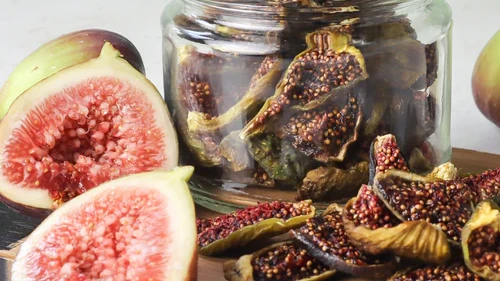Your Cart is Empty
0
Your Cart is Empty
Your Cart is Empty
Add description, images, menus and links to your mega menu
A column with no settings can be used as a spacer
Link to your collections, sales and even external links
Add up to five columns
Add description, images, menus and links to your mega menu
A column with no settings can be used as a spacer
Link to your collections, sales and even external links
Add up to five columns
Barb Hodgens loves to cook with alternative, healthy whole food ingredients, with a focus on gut health. Barb has overcome her own gut health issues through healthy eating. Share your ideas, comments and photos at the end of this post :)

When it’s fig season, it really is fig season! It may be short lived but if you have a fig tree you can certainly experience abundance. Once ripe, figs don’t stay fresh for very long either. Dehydrating is by far the healthiest and most versatile way to preserve them. The process concentrates the sweetness into compact little morsels that store well for months or even years.
Dried figs make an excellent snack. They can simply be eaten or used in a recipe as is or rehydrated in hot water to become plumper and juicier. Dried figs are a wonderful natural sweetener as well and can be used interchangeably with dried prunes, apricots, or dates in most recipes. Add them to Christmas cakes, puddings, bread and bakes. You can also add then to homemade granola and overnight oats or include them on your next cheese platter.

Fig skins are totally edible. Depending on the variety, some skins will be thin and delicate while others thick and slightly rough. Some people prefer to remove the skin when eating fresh figs but when drying, the skin is best left on. Our figs are new season and very delicate. For thicker skins, a brief blanch in hot water could speed up the drying time. We blanched half of ours but there was no noticeable difference to the drying time.
Figs have an incredibly soft, jammy centre this is full of tiny crunchy seeds. If the fruit are very ripe or starting to ferment the sugars impede dehydration. If your figs are at different stages of ripeness the drying time is likely to vary, and not just by a few hours, some figs could require a day or more extra. Don’t be tempted to increase the temperature though, you don’t want hard casing to occur where moisture gets trapped inside.



Luvele
Rated 3.7 stars by 9 users
When it’s fig season, it really is fig season! It may be short lived but if you have a fig tree you can certainly experience abundance. Once ripe, figs don’t stay fresh for very long either. Dehydrating is by far the healthiest and most versatile way to preserve them. The process concentrates the sweetness into compact little morsels that store well for months or even years.
Figs – any variety
Gently wash the figs, if necessary. Dry with a clean kitchen towel.
Remove the stems. Removing the tips as well is optional.
Cut figs into quarters. If the figs are small, cut in half.
Arrange the figs skin side down on the Breeze Food Dehydrator trays, leaving some space around them to promote airflow.
To test for readiness. Remove a fig and let it cool. It should be pliable and chewy. When you press into the seedy centre with your fingers - it should be dry to touch but still have some sponginess. If it oozes, it needs more time. For best practise long term storage tips, see how to condition dehydrated food.
Once the figs are dried, they can be stored in airtight jars, vacuum canisters or vacuum sealed.


When it’s fig season, it really is fig season! It may be short lived but if you have a fig tree you can certainly experience abundance. Once ripe, figs don’t stay fresh for very long either. Dehydrating is by far the healthiest and most versatile way to preserve them. The process concentrates the sweetness into compact little morsels that store well for months or even years.
Dried figs make an excellent snack. They can simply be eaten or used in a recipe as is or rehydrated in hot water to become plumper and juicier. Dried figs are a wonderful natural sweetener as well and can be used interchangeably with dried prunes, apricots, or dates in most recipes. Add them to Christmas cakes, puddings, bread and bakes. You can also add then to homemade granola and overnight oats or include them on your next cheese platter.

Fig skins are totally edible. Depending on the variety, some skins will be thin and delicate while others thick and slightly rough. Some people prefer to remove the skin when eating fresh figs but when drying, the skin is best left on. Our figs are new season and very delicate. For thicker skins, a brief blanch in hot water could speed up the drying time. We blanched half of ours but there was no noticeable difference to the drying time.
Figs have an incredibly soft, jammy centre this is full of tiny crunchy seeds. If the fruit are very ripe or starting to ferment the sugars impede dehydration. If your figs are at different stages of ripeness the drying time is likely to vary, and not just by a few hours, some figs could require a day or more extra. Don’t be tempted to increase the temperature though, you don’t want hard casing to occur where moisture gets trapped inside.

 :recipekit:
:recipekit:

Sign up to get the latest on sales, new releases and more …